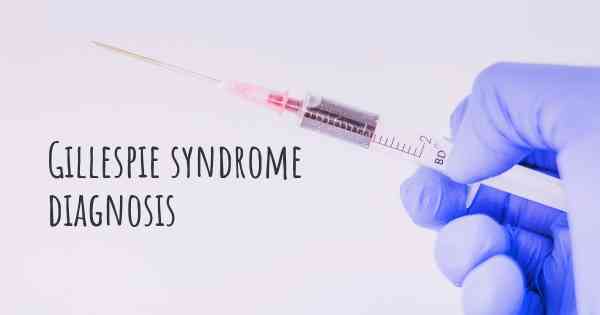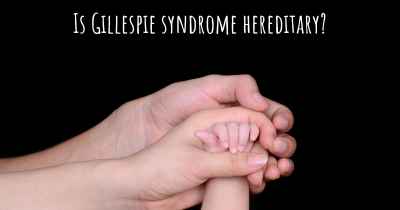How is Gillespie syndrome diagnosed?
See how Gillespie syndrome is diagnosed. Which specialists are essential to meet, what tests are needed and other useful information for the diagnosis of Gillespie syndrome

Diagnosis of Gillespie Syndrome
Gillespie syndrome is a rare genetic disorder characterized by the combination of bilateral aniridia (absence of the iris) and cerebellar ataxia (lack of muscle coordination). It is caused by mutations in the ITPR1 gene, which is responsible for encoding a protein involved in calcium signaling in the brain and eyes.
Diagnosing Gillespie syndrome can be challenging due to its rarity and the variability of symptoms among affected individuals. However, there are several key steps and medical evaluations that can aid in the diagnosis:
1. Clinical Evaluation:
The initial step in diagnosing Gillespie syndrome involves a thorough clinical evaluation by a healthcare professional. This evaluation typically includes a detailed medical history, physical examination, and assessment of symptoms. The presence of both aniridia and cerebellar ataxia is a strong indication for further genetic testing.
2. Ophthalmological Examination:
An ophthalmological examination is crucial in diagnosing Gillespie syndrome. The absence of the iris (aniridia) is a hallmark feature of the condition. An ophthalmologist will carefully examine the eyes using various techniques, such as slit-lamp biomicroscopy and dilated fundus examination, to assess the extent of iris abnormalities and identify any additional ocular anomalies.
3. Neurological Assessment:
Given that cerebellar ataxia is a defining feature of Gillespie syndrome, a comprehensive neurological assessment is essential. This evaluation may involve assessing muscle coordination, balance, reflexes, and motor skills. Neurological imaging techniques, such as magnetic resonance imaging (MRI), may also be employed to visualize the brain and identify any structural abnormalities.
4. Genetic Testing:
Genetic testing plays a crucial role in confirming the diagnosis of Gillespie syndrome. It involves analyzing the ITPR1 gene for mutations or alterations. There are various genetic testing methods available, including sequencing the entire gene or targeted analysis for known mutations. Genetic testing can be performed using a blood sample or other appropriate tissue samples.
5. Differential Diagnosis:
It is important to differentiate Gillespie syndrome from other conditions that may present with similar symptoms. Differential diagnosis involves ruling out other causes of aniridia and cerebellar ataxia, such as WAGR syndrome, Miller syndrome, and sporadic aniridia. This process may require additional medical evaluations and genetic testing.
6. Multidisciplinary Approach:
Due to the complex nature of Gillespie syndrome, a multidisciplinary approach involving various medical specialists is often necessary. This may include ophthalmologists, neurologists, geneticists, and other healthcare professionals. Collaboration among these experts helps ensure a comprehensive evaluation and accurate diagnosis.
7. Family History:
Obtaining a detailed family history is crucial in diagnosing Gillespie syndrome. The condition is inherited in an autosomal dominant manner, meaning that an affected individual has a 50% chance of passing the mutation to each of their children. Identifying other family members with similar symptoms or a history of aniridia and cerebellar ataxia can provide valuable clues for diagnosis.
In conclusion, diagnosing Gillespie syndrome involves a combination of clinical evaluation, ophthalmological examination, neurological assessment, genetic testing, differential diagnosis, a multidisciplinary approach, and consideration of family history. It is essential to consult with healthcare professionals experienced in rare genetic disorders to ensure an accurate diagnosis and appropriate management of the condition.
Posted Mar 11, 2017 by Shalana 1000








